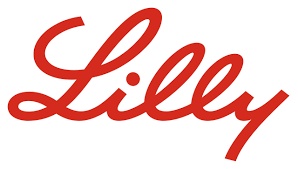Eli lilly Q3 2024 $LLY (-0,01 %)

Financial performance
- Sales growth: Eli Lilly recorded impressive revenue growth of 42%, excluding the sale of the olanzapine portfolio. This growth was largely driven by the Mounjaro and Zepbound products, with revenue from new products increasing by over $3 billion.
- Sales in the USA: Sales in the US increased by 46%, with volume growth of 35% driven by the success of Zepbound and Mounjaro.
Balance sheet overview
- Debentures: In August 2024, the company issued bonds totaling $4.96 billion to finance acquisitions and support general corporate purposes.
Details of the income statement
- Gross margin: The gross margin increased to 81.0% in the third quarter of 2024, an increase of 0.6 percentage points.
- Operating result: Operating income was $1.526 billion, with an operating margin of 13.3%.
- Earnings per share: Reported earnings per share for the third quarter of 2024 were $1.07, while non-GAAP earnings per share were $1.18.
Cash flow overview
- Debt and credit facilities: The company extended its 364-day credit facility and increased capacity to $5 billion. In addition, the multi-year credit facility was extended by 3 billion dollars.
Key figures and profitability metrics
- Gross margin - OPEX/sales ratio: The non-GAAP ratio increased to 40.0% in the third quarter of 2024.
Segment information
- Product performance: Mounjaro sales amounted to 3.1 billion dollars globally, of which 2.4 billion dollars were in the USA. Verzenio sales increased by 32 %.
Competitive position
- Market share: The company has established a leading position in new patient admissions in markets such as the UK, Germany and Japan.
Management forecasts and comments
- Sales forecast: Revenue guidance has been updated to a range of $45.4 billion to $46 billion for 2024, with projected growth of 50% in the fourth quarter compared to the fourth quarter of 2023.
- Supply and demand: The company plans to accelerate demand activity as supply constraints ease.
Risks and opportunities
- Regulatory and market risks: The company faces risks from exchange rate movements and changes in tax laws that could affect future business.
- Opportunities: Expansion in production and new product launches are expected to drive growth.
Summary of results
Eli Lilly delivered a strong financial performance in the third quarter of 2024, characterized by significant sales growth from new products such as Mounjaro and Zepbound. The company is expanding its manufacturing capacity and has adjusted its sales guidance to reflect continued growth. Despite the risks associated with regulatory changes and market conditions, the strategic investments in research and development and the launch of new products are promising and position the company well for future growth.
Positive aspects
- Sales growth: Eli Lilly reported an impressive 42% increase in revenue, driven by the strong performance of Mounjaro and Zepbound, with new product revenue increasing by over $3 billion.
- Product approvals and pipeline progress: The company achieved several important milestones in its pipeline, including the approval of Ebglyss in the US for atopic dermatitis and Kisunla for Alzheimer's disease in Japan and the UK.
- Expansion of production: Eli Lilly invested nearly $2 billion to expand its manufacturing facilities in Ireland, contributing to a total commitment of over $20 billion since 2020.
- Strong market performance in the US: Sales in the US increased by 46%, with significant volume growth driven by the successes of Mounjaro and Zepbound.
- Positive results from clinical trials: The company announced positive data from the SURMOUNT-1 Phase III study of tirzepatide, which showed a 94% reduction in the risk of type 2 diabetes.
Negative aspects
- Challenges in the supply chain: The company faced supply constraints that impacted the timing of product launches and required careful management of demand and supply.
- Inventory dynamics: There was a mid-single digit percentage decline in channel inventory for Mounjaro and Zepbound, which impacted third quarter sales.
- Legal and regulatory risks: The company is involved in various legal proceedings, including patent disputes and product liability cases, which could impact financial results.
- Tax and currency risks: Changes in tax laws and fluctuations in foreign currencies pose risks to future business operations and financial performance.
- Operating costs: R&D expenditure increased by 13% due to continued investment in early and late stage portfolios, which could increase pressure on margins if not offset by sales growth.

